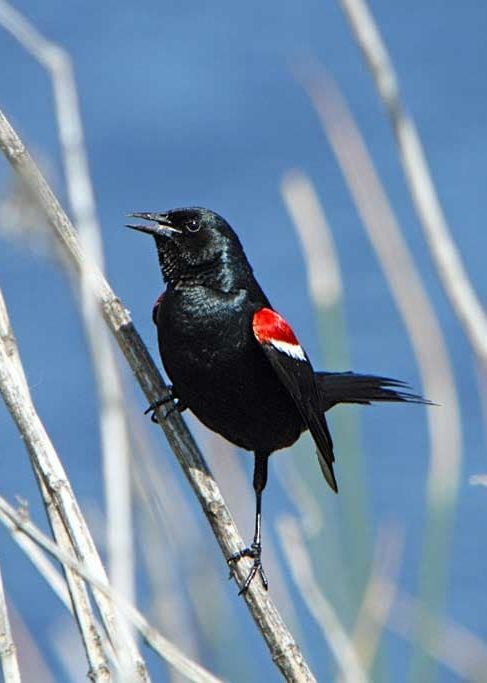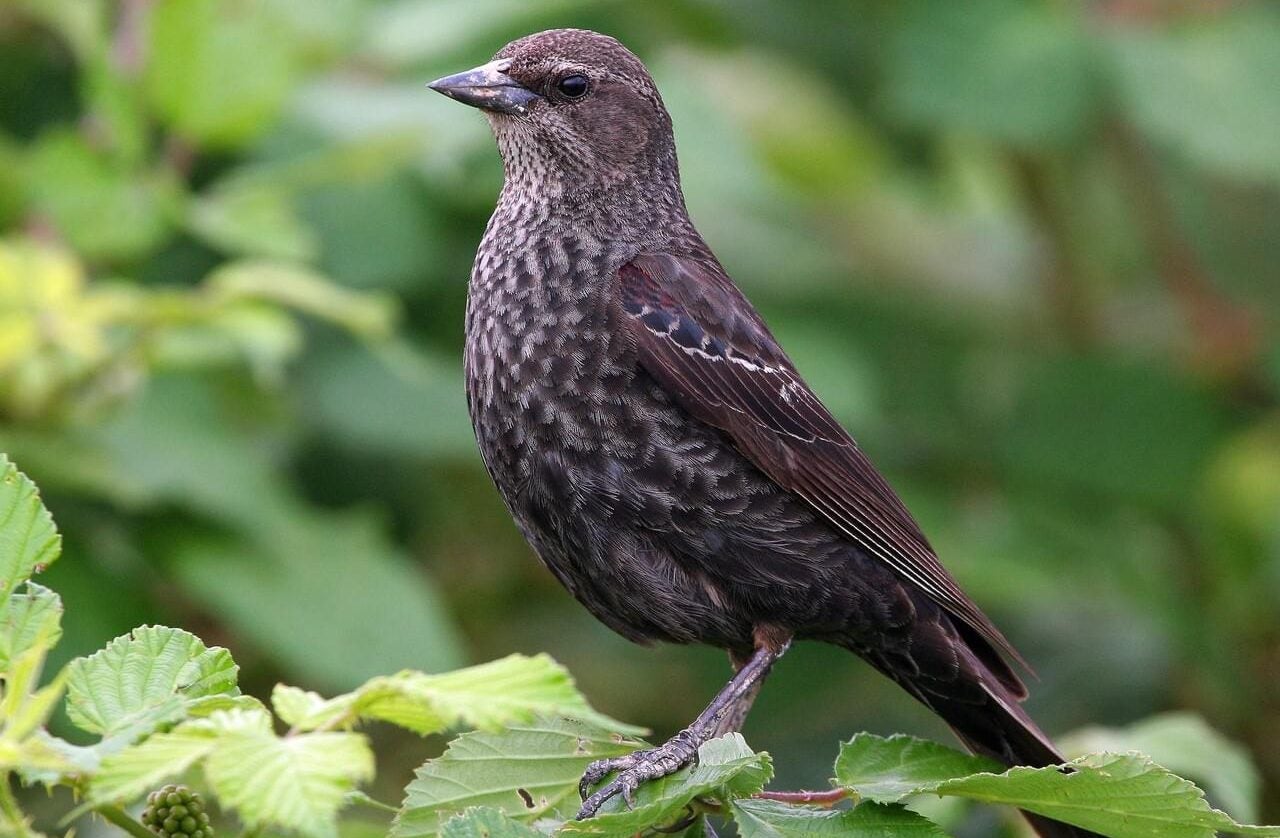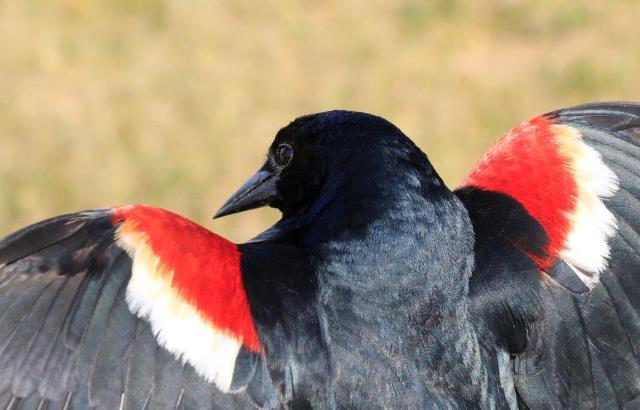
General Information: Tricolored blackbirds form the largest breeding colonies of any North American land bird, often with groups of tens of thousands. These colonies form in wetlands and agricultural lands and last through the nesting season until the chicks have fledged. These birds are named after their multicolored patch on their shoulders.
Category: Focal species
Surface Water Needs: Yes, for nesting
Federal Listing Status: None
State Listing Status: Threatened
Potential Conservation Actions:
- Alter crop harvest timing if there is a colony present
- Maintain and manage (e.g., grazing plans) foraging habitat near nest colony
Fun Fact
In the 1930s, a single tricolored blackbird colony in Glenn County was estimated to include as many as 300,000 birds.
Habitat
Grasslands, agricultural lands, riparian areas, and open woodlands all provide habitat for the tricolored blackbird. It nests in riparian areas and near freshwater marshes and wetlands.

Grasslands

Agricultural lands

Open woodlands

Riparian and wetland areas
Disturbance and Stressors
Urban development, habitat loss and fragmentation, and agricultural practices have contributed to the decline of the tricolored blackbird. The birds now utilize agricultural crops, like triticale, as nesting habitat.

Habitat fragmentation

Urban development

Agriculture


Sources: Beedy 2008, Beedy and Hamilton 1997, Beedy et al. 2020, Center for Biological Diversity, Hamilton et al. 1995, Neff 1937
Photo credits: Alan Vernon, Ted Beedy, Matt Elyash (California Department of Fish and Wildlife)